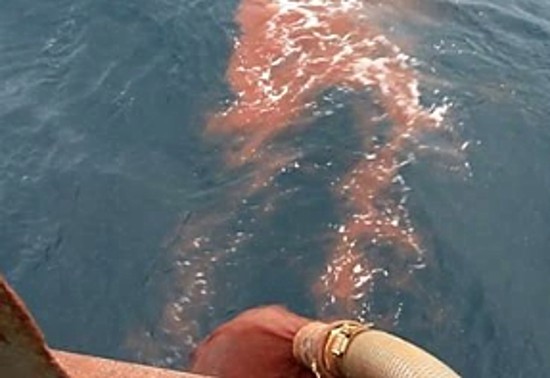It appears that without government oversight, organizations and some individuals are taking it upon themselves to put aerosols into the atmosphere and concoctions into the ocean in the name of mitigating climate change.
In December, I wrote about Make Sunsets, a company that took it upon itself to dump aerosols into the upper atmosphere to reflect sunlight and cool the planet. Well, it turns out that other non-state actors are getting into the act according to an article that appeared in on December 16, 2022, in Science. Paul Voosen, a reporter for the magazine, describes a University of Notre Dame experiment carried out in May 2022 in the Apalachicola Estuary in Florida. Researchers released an alkaline powder, a material used in cement, into the water and then tracked its impact on pH levels, and the local shellfish population’s health. The experiment was designed as a field demonstration for a technique called ocean liming that has been proposed by geoengineering advocates.
What’s the environmental problem that ocean geoengineering is meant to address? Because of rising levels of carbon dioxide (CO2) in the atmosphere from human activity, and because the ocean is a carbon sponge, carbonic acid is changing the pH levels of the water. This is threatening corals and shellfish.
We’ve seen geoengineering water stories before. Acid rain from sulphur dioxide (SO2) chimney-stack emissions caused the pH in lakes and streams to fall until governments imposed regulations to force polluters to curb smokestack emissions. Well, CO2 is doing what SO2 was doing to lakes and streams, but this time the former is making the oceans more acidic. Because the volume of water is significantly larger, however, the decline in pH has been incrementally slower than what happened with acid rain. Back then, a number of lakes were limed to try and neutralize acidity with inconclusive results.
Efforts to combat acid rain may have inspired a rogue actor, Russ George, in July 2012, to dump 100 tons of iron sulphate into the Pacific Ocean causing a massive algae bloom that at one point extended 10,000 square kilometres. George chose iron sulphate while others have proposed dumping crushed limestone as a way to neutralize carbonic acid that forms when the ocean absorbs CO2.
Scientists have recognized there could be unintended consequences to ocean geoengineering. This includes oxygen depletion when the algae bloom dies off, formations of toxic algae blooms like red tide, and unintended changes to the water column as added acid-neutralizing materials sink and impact ocean biodiversity.
And now we can add the University of Notre Dame experiment to trial geoengineering being conducted with no more than local approval from officials at the Apalachicola National Estuarine Research Reserve who signed off to give permission with little understanding of the potential disruption that could occur to local marine life. Fortunately, the alkaline enhancements didn’t produce any noticeable negative environmental impacts. Small perturbations in CO2 levels for a short period of time were noted with drops of 70 parts per million (ppm) to an average reading of 200 ppm where the dumps occurred, less than half of the level of CO2 readings in the atmosphere.
The reason for picking the Apalachicola Reserve for this experiment was that oyster populations there were in decline. So the experiment included monitoring oyster health and measuring microbial water content throughout to note any changes. It was impossible to draw any conclusions on whether liming of the water had any long-term impact although no red flags in the short term were noted.
Similar experiments have been done in other locales. Sodium hydroxide (found in lye, soaps and detergents) has been dumped into the ocean off Australia’s Great Barrier Reef in recent years. And iron-coated rice husks have been distributed in the Arabian Sea. In both cases like the one in Apalachicola, research has been inconclusive.
A flaw in all of these geoengineering dumping experiments is the lack of understanding of the CO2 produced to make the materials being dumped. For example, lime requires the heating of limestone which releases as much CO2 in the atmosphere as would be taken up by the oceans when the lime is dumped.
A researcher involved in the Apalachicola experiment acknowledged that if we are collectively to go the geoengineering route to mitigate climate change impacts, altering the chemistry of seawater is more controllable than adding aerosols to the atmosphere. That’s because adding chemistry to seawater has only a short-term impact whereas adding aerosols to the stratosphere can have consequences that last many years.
A much better strategy to reduce ocean acidification would be to use nature to sequester the CO2 humans are putting into the atmosphere and ocean. An initiative off the coast of Namibia is cultivating giant kelp forests. Similar efforts are being made to grow seagrass in coastal areas. Unlike dumping, these approaches don’t involve chemically manipulating seawater. And both encourage increases in biodiversity.
















